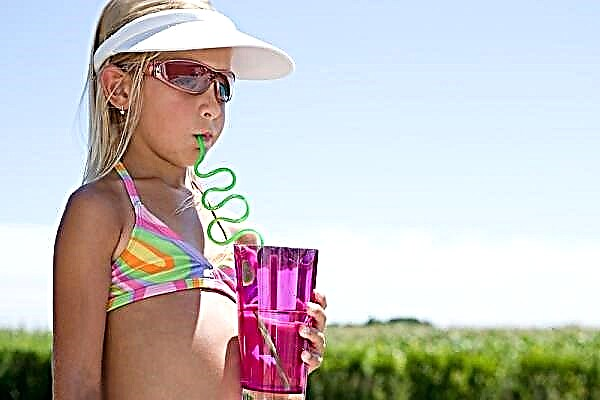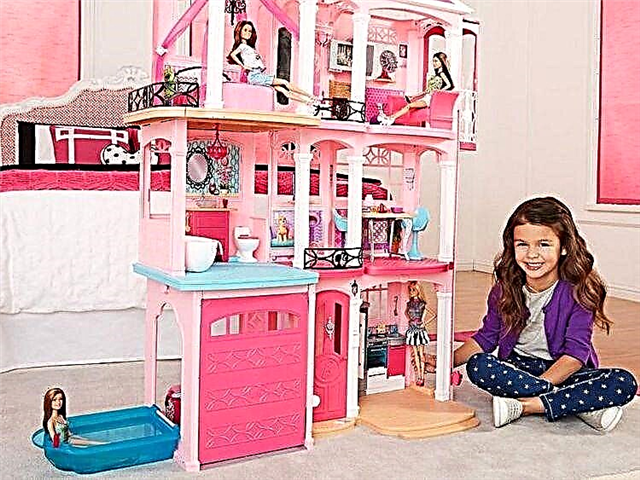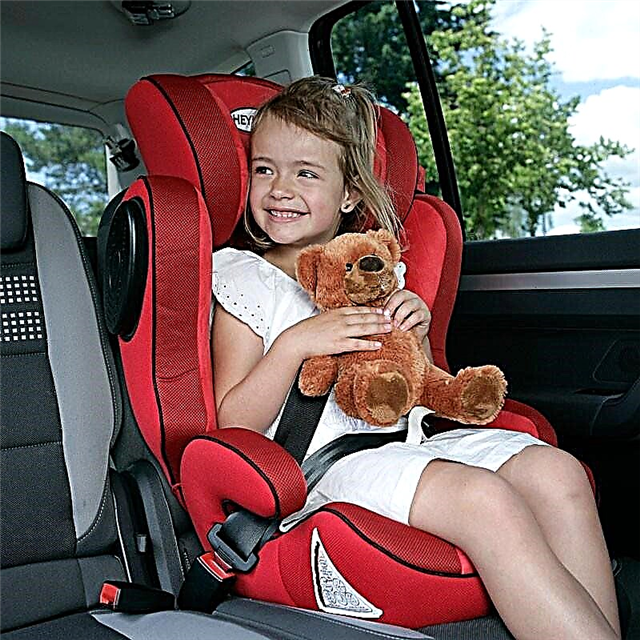
Nurofen is called one of the most popular pain and fever medicines. Such a remedy is in demand among adults and is often prescribed to children due to the wide variety of its dosage forms.
However, in some situations, the use of Nurofen is impossible, for example, it was not at hand, and the child's temperature is already above +39 degrees and there is no time to run to the pharmacy. Or, after the first use of the drug, the baby has an allergic rash.
In addition, for many mothers, the price of Nurofen seems overpriced, which is why they are looking for an equally effective, but more affordable medication. And therefore, parents should know what other drugs can replace Nurofen in the treatment of a child of different ages.

Release form and composition
The drug comes in several forms, but in each of them the main ingredient is ibuprofen. In pharmacies you can find this Nurofen:
- In suspension. This sweet strawberry or orange medicine can be given to babies from 3 months of age. It is dispensed with a measuring syringe, which is sold with a bottle of suspension with a capacity of 100, 150 or 200 ml. From 5 ml of this medication, a small patient receives 100 mg of ibuprofen. In addition, the preparation includes glycerol, maltitol syrup, flavoring, gum and other auxiliary ingredients, but there are no sugar and artificial coloring additives in such a suspension.
- In the form of rectal suppositories. These small white suppositories contain 60 mg of ibuprofen each, and of the additional ingredients they contain only solid fats. This makes this form of Nurofen the most preferable for infants and children with allergies. It can be used from 3 months to 2 years of age. 10 candles are sold in one pack.
- In tablet form. Such Nurofen is produced in several versions - ordinary tablets of 200 mg (especially for children they are sold in orange packs of 8 pieces), Forte (the dosage is doubled in it), Express Neo tablets (they act faster because of the special form of ibuprofen) , drugs Long, Multisymptom and Plus (they add another active ingredient to ibuprofen). Nurofen tablets containing 200 mg of ibuprofen in each tablet are approved from the age of six. All other types of pills are prescribed only from the age of 12.
In addition, Nurofen is available in capsules prescribed by pediatricians for patients over 12 years old. There is also a medicine in the form of a gel, but it is not used in children under 14 years of age.

How does it work?
Ibuprofen has been noted to be able to influence the production of prostaglandins by inhibiting enzymes called cyclooxygenases. Since it is prostaglandins that are the main substances that support the inflammatory response, cause an increase in temperature and participate in the formation of pain signals, taking any form of Nurofen affects all these effects. The drug helps to eliminate or reduce pain and reduce high fever, and also helps to get rid of inflammation more quickly.

When is it used in children?
The most common reason for giving Nurofen to a child is fever. The medication is prescribed for children with flu, scarlet fever, sore throat, otitis media, SARS and other diseases in which a rise in temperature occurs. In addition, the drug is in demand in case of a temperature reaction due to vaccination.
An equally common reason for using Nurofen in childhood is pain syndrome. The drug helps out with painful teething, injuries, headaches and so on. Moreover, its effect is more pronounced if painful sensations appeared due to the inflammatory process.

When is it contraindicated?
Nurofen is not prescribed to a child:
- At the age of up to 3 months (in the form of a suspension and suppositories) or up to 6 years (in the form of 200 mg tablets).
- With pathologies of the digestive tract, in which there is inflammation or ulceration of the wall.
- With severe kidney disease.
- With severe liver damage.
- With disorders of the blood coagulation system.
- With high levels of potassium in the blood.
- With cerebral or other bleeding.
- With intolerance to any component of the selected form of Nurofen.

Suppositories are contraindicated in proctitis, and tablets are not given to babies with hereditary pathologies of carbohydrate absorption. In addition, there are quite a few diseases in which Nurofen should be given with caution, for example, bronchial asthma or anemia.
Analogues with the same active ingredient
Most often, instead of Nurofen, they acquire a similar form of Ibuprofen, since such a medicine is cheaper. It is available in the form of suppositories, ointments, suspensions, capsules, gel and tablets, so it is very easy to choose the most suitable analogue.
Indications, age restrictions, a list of contraindications, compatibility with other drugs, possible side effects and other features of the use of Ibuprofen and Nurofen are the same. The difference in these drugs is this is the lower cost of ibuprofen and other auxiliary substances in the composition of preparations.

Other products, the main ingredient of which is also ibuprofen, are:
- Ibuprofen-Akrikhin suspension.
- Deblok tablets.
- Gel and cream Dolgit.
- Faspik coated granules and tablets.
- Coated tablets Mig 200 and Mig 400.
- Effervescent tablets and film-coated tablets Ibuprofen-Hemofarm.
- Suspension Maxikold for children.
The doctor may prescribe any of these drugs, such as a replacement for Nurofen, choosing the appropriate form and dosage. For example, the smallest patients are usually prescribed Maxicold or Ibuprofen in suspension, and Mig 400 and Faspik tablets are suitable for treating patients over 12 years old, since one such tablet contains 400 mg of ibuprofen.
Analogs containing paracetamol
If for any reason it is impossible to use ibuprofen preparations in the treatment of a child, they are most often replaced by drugs based on paracetamol (anilides). It is these two groups of non-steroidal anti-inflammatory drugs that doctors (including the well-known pediatrician Komarovsky) call the safest for children. And if the baby has pain or the body temperature rises, first of all, one of these drugs should be chosen.
Unlike Nurofen, these drugs are less harmful to the body of babies., therefore, in some forms, they can be used from 1 month. Moreover, they begin to act a little later and the duration of the therapeutic effect is shorter than that of Nurofen (up to a maximum of 4 hours).

Children with fever or pain can be given:
- Efferalgan.
- Tsefekon D.
- Paracetamol.
- Panadol.
- Perfalgan.
- Calpol.
- Children's Panadol.
- Paracetamol-UBF.
- Paracetamol-Hemofarm, etc.
Such medicines are presented in different forms, among which there are rectal suppositories, and sweet syrup, and tablets with different dosages. It is better to choose a suitable option for replacing Nurofen with a doctor, since the pediatrician will not only advise the most adequate analogue, but will also determine the dosage required for a particular patient.
For example, a baby at the age of 1 month with a fever may be recommended by the doctor Cefekon D in candles. At the same time, Efferalgan suppositories are allowed only from 3 months of age, since they contain more active ingredient, and Children's Panadol suppositories can only be used in babies older than 6 months.
Preparations containing both ibuprofen and paracetamol
In some cases, ibuprofen alone does not help a child with a high fever and has to alternate with paracetamol preparations. In such a situation, medications come to the rescue, in which ibuprofen is supplemented with paracetamol. Both of these substances are contained in Nurofen Multisymptom and Long tablets in different dosages. A replacement for such Nurofen can be:
- Ibuklin Junior. Such mint-fruit tablets are dissolved and given as a suspension to children over 3 years old.
- Next. These coated tablets are prescribed for children over 12 years of age.
- Brustan. Such a suspension is allowed from 2 years of age.
Since there are two active ingredients in these drugs at once, the risk of side effects from their use is higher, and there are more contraindications. For this reason, the use of such funds for a feverish child or a baby with pain should be only after a medical consultation.
Other analogues
Among other medicines that have the same therapeutic effect as Nurofen, in the treatment of children can be used:
- Nimesulide preparations (Nise, Nimesil, Nimesulide, Nimulid, Nimika and others).
- Diclofenac sodium preparations (Voltaren, Diclofenac, Ortofen, Diclac, Naklofen, Diclobene and others).
- Analgin and preparations based on it.
- Medicines containing ketorolac (Ketanov, Dolak, Ketorolac, Ketorol and others).
Such drugs have a very pronounced analgesic effect, therefore they are often prescribed for pain syndrome.

However, all such drugs in childhood are considered reserve drugs, that is, doctors prescribe them to children only in exceptional cases, more often preferring paracetamol or ibuprofen drugs. This is associated with a high risk of side effects on the growing body and age restrictions.
For this reason, it is unacceptable to give a child any of these medications without consulting a doctor.
Lytic mixture
This is the name of three drugs that are given together at a temperature dangerous for the child, especially if, against the background of fever, the baby's skin is pale, and the legs and arms are cool. Another name for the lytic mixture is "triad":
- It includes antipyretic drug, which Analgin is often used, but it can be paracetamol and ibuprofen.
- The second ingredient is antihistamine - most often Suprastin, but Diphenhydramine is often used. The purpose of this medication is to reduce the risk of an allergic reaction and to have a sedative effect.
- The third component to help eliminate vasospasm of the skin - this is No-shpa or Papaverin. Lytic mixture can be given to children in tablets, but most often it is injected.
In this case, the injection should be given by a medical professional, since a child may develop a negative reaction to such an injection. It is very dangerous to inject children with "triplets" or to give its components in tablets without the consent of a doctor, therefore such actions of parents are unacceptable.

How to choose the right analog of Nurofen
As already specified above, the selection of a drug to replace Nurofen should be discussed with a doctor. The pediatrician will assess the risks and take into account contraindications, and determine the correct dose, taking into account the age and body weight of the patient. It is also important to take into account the following nuances:
- Does the child have a tendency to allergies. Children with allergies are usually prescribed suppositories, and if a syrup or other form is prescribed, mothers should carefully read the list of auxiliary components.
- Whether the little patient is vomiting. With such a pathological symptom, rectal suppositories will be the best option for an antipyretic agent.
- Does the child know how to swallow pills? If the patient is already 6 years of age but has difficulty swallowing solid medicine, a suspension or syrup is prescribed.
- What other medications does the baby take? To avoid increasing the risk of side effects, drug compatibility should be checked before starting treatment.
- What is the release date of the drug. Before giving any medicine to a child, it is imperative to clarify its expiration date and find the date of manufacture on the package.

Reviews
On the treatment of children with Nurofen, most of the reviews from parents and pediatricians are positive. If it is required to replace such a medication with an analogue, then most often Ibuprofen is prescribed and bought. Another, no less popular option instead of Nurofen is called Tsefekon D. According to mothers, such candles act quickly and help to reduce the temperature in infants for a long time, and they do not notice side effects.





